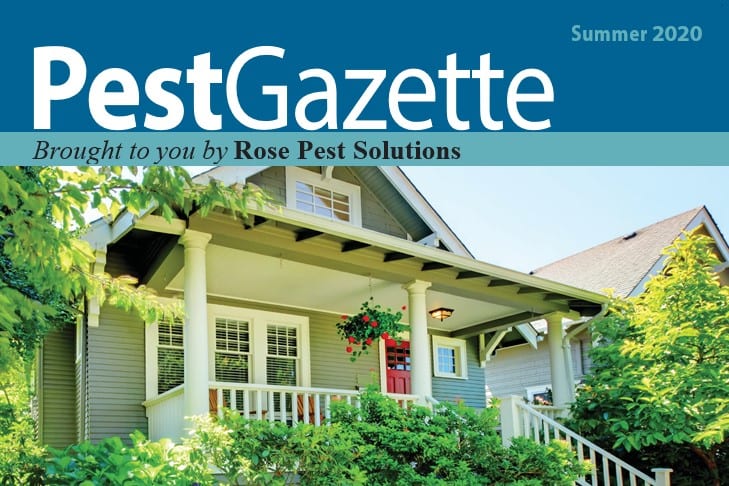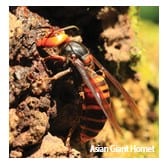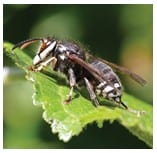We’ve been cooped up for way longer than usual this year with stay at home ordinances. Now is the time to get the most out of your yard and enjoy some beautiful sunshine outside with the family. Take a look at our latest seasonal Pest Gazette below. Learn what attracts particular pests into your home and what you can do to get rid of them. Make sure you get the most out of your outdoor fun this summer!

Keep Summer Pests Out!
Pest control isn’t just about spraying a product somewhere to ward off pests. Pest control starts with identifying underlying issues that attract pests to your house in the first place. As summer begins to heat up, inspect your home for the key signs of termites. Eliminate the conditions that are helping termites claim territory of your house.
What You Can Do
- Do a “walk about” around the exterior perimeter, paying special note to the foundation which is a primary access point for termites to enter a structure.
- Check for improper drainage around the foundation that could result in standing water and wood decay. Clogged gutters are a prime candidate for attracting termites, wasps, and even animals.
- Remove vegetation next to or on the foundation that could make it difficult for termite inspectors or yourself to get a close look at the foundation wall.
- Inspect closely for any mud tubes that termites use to tunnel into your home and feed on wood. You may also see swarming termites as another clue to termite presence. Finding small, translucent wings of termite swarms in spider webs, windowsills or anywhere else around your home is potentially a sign that termites are there.
- If you are able to, access structural wooden members below the home in a crawl space or basement, also inspect for termite evidence in these places that are common for termite activity. The sooner that termite activity is detected, the greater the chances are of minimizing costly damage to your home.
If you suspect you may have termites or want an expert to inspect your home for termite evidence, give us a call first thing so we can handle any potential infestation and prevent further damage. If you don’t feel like doing any of this yourself, we’re here with the expertise to help you!
How Do Summer Pests Get In?
Carpet beetles are common fabric pests that occur throughout the United States. Outdoors, adult carpet beetles are found on flowers from late spring to early summer feeding on pollen and nectar. They can be carried into the house unintentionally on flowering plants or may enter the home through improperly sealed doors and windows. You may find these beetles on windows and windowsills because they are attracted to lights.
Once they get inside, carpet beetle larvae can cause feeding damage to fabrics, furnishings, and clothing that contain natural fibers. They may also feed on other animal products, dead animals and insects, animal fur, and some stored products.
Signs of Carpet Beetles
As carpet beetle larvae feed, they can leave behind clues such as frass (insect droppings) and cast (shed) skins that indicate the presence of an infestation. Other signs of carpet beetles may include surface damage and irregular holes in fabrics, or uneven areas in brushes and furs. In extreme or neglected infestations, a buildup of old larval skins can even lead to skin or respiratory irritation caused from contact or prolonged inhalation of the larval hairs. Therefore, it is important to contact a pest management professional at the first signs of carpet beetles.
Types of Carpet Beetles
There are four species of carpet beetles commonly found infesting fabrics and carpets: the black carpet, common carpet, furniture carpet, and varied carpet beetles. Differentiating between species is important to finding the primary source of an infestation and is the key to eliminating these pests. However, species identification can be difficult with different color variations and patterns. It’s best left to your pest management professional. No matter the species, carpet beetles can cause considerable damage to fabric goods. Remember to contact your pest management professional at the first signs of an infestation to eliminate the population and to minimize the harm these pests may cause.
Blow Flies as Summer Pests
 |
 |
Blow flies are a diverse group of flies that generally have a metallic sheen to their bodies and are larger than house flies in size. They may be black, blue, coppery green, olive green, or bronze in coloration. All adult blow flies have blunt mouth parts and do not bite. However, blow fly larvae (called maggots) feed on dead and decaying organic matter and help to break it down. In addition to meats and flesh, they often infest wounds of sheep, deer, cattle, and other animals. They can also be attracted to garbage and other refuse.
Blow Flies Could Mean Death is Nearby
Blow flies deposit eggs in wounds or on dead carcasses. The fly larvae that hatch from the eggs feed on decaying flesh or matted hair. When you see blow flies in your home, it usually means that there is a carcass of some animal nearby to the fly sighting. Perhaps a mouse, rat, squirrel, bird, or some other type of urban wildlife has died within the structure, inside a crawlspace, behind a wall void or in an attic space. Call us at the first sign of flies in your home. We’re here to help get to the root of the problem.
Stinging Summer Pests
This picture is terrifying. It’s like an alien sci-fi creature. No wonder it went viral the second they were mentioned on the news!! Aside from Asian giant hornets, other native or established hornets and wasps like yellow jackets and bald-faced hornets can be of concern around the home. They’re big-time summer bummers. Stinging insects send more than half a million people to emergency rooms each year and most of these stings are caused by wasps and hornets.
Asian Giant Hornet
The Asian giant hornet, dubbed “murder hornets” by the media, have gotten a lot of recent attention. As of May 2020, only four specimens of Asian giant hornets have been found in Washington State and a colony was destroyed across the border in Canada. They are the largest species of hornets in the world, reaching up to 2 inches in size. They are particularly concerning for honeybees and their keepers. A few Asian giant hornets can destroy an entire honeybee colony in a few hours by literally cutting their heads off with their mandibles. The hornets then will use the honeybee bodies to feed their young in their nests. There is not much concern about this species right now because it has not established in the United States.

yellowjacket on nest by Rose Pest Solutions
Yellowjackets
Yellowjacket queens mate in the fall and spend the winter months overwintering in a protected spot, often in structural voids. When they emerge the spring, the queens begin building a nest where they will raise the first generation of their brood. Once these wasps reach adulthood, they are ready to take on the responsibilities of a worker wasp: expanding the nest, foraging for food, and protecting the colony.
Adult yellowjackets are pollinators, searching for nectar and other sweets. However, they also collect protein-packed foods like insect grubs or even your picnic lunch, which they bring back to the nest and feed to the larvae. The pattern of yellow markings on the thorax and abdomen, the insect’s torso, are unique and can be useful in differentiating between species.
Nests are typically below ground, but some species will nest aerially. Aerial nesting yellowjackets make use of trees, attics, and other places that offer some confining spaces. The ground nests are particularly troubling because they can easily go unnoticed. Children playing catch in the yard, or someone mowing a lawn may inadvertently disturb the nest and incur the unfortunate wrath of these stinging pests. Trust us, if you get too close to a yellowjacket nest, they will let you know! Do not risk your health trying to treat or remove nests yourself. Do the right thing and call us today to come and take care of it for you and your family!
 Bald Faced Hornets
Bald Faced Hornets
Have you ever seen a large gray wasp nest about the size of a football made of paper like material hanging down from a tree? These are bald-faced hornet wasp nests. The wasps are extremely aggressive, and protective of their nests and will sting repeatedly if disturbed. They are one of the few hornets with a white face (if you want to get close enough to take a look – this is not highly recommended!) Do not attempt to remove these wasps and their nests yourself. We have the knowledge, experience, and proper personal protective equipment to do this correctly and safely. Please contact us if you spot one of these nests forming in or around your home or yard.
Rose Protects You from Summer Pests
To the untrained eye, some pest problems can be more challenging to identify and eradicate. Our professionals know just where to look to save you from your frustration. Rose Pest Solutions is here for you to get to the root of the problem and offer a solutions fit for the needs of your home. Ask us today for a free quote for The Healthy Home Maintenance Program (HHMP), our most popular residential pest service. It’s the gold standard in home pest protection and prevention. This ultimate protection package involves four scheduled visits, once every three months, to ensure you have the peace of mind and safety that comes from a pest-free home. We stand by our services and their 24/7/365 protection 100%, so we’ll take care of issues that pop up in between scheduled visits at absolutely no cost to you. That’s right, we’ll come back out for free.
Give us a call today at 800-GOT-PESTS? to set something up so you can get back to enjoying the weather without summer pests holding you back.





